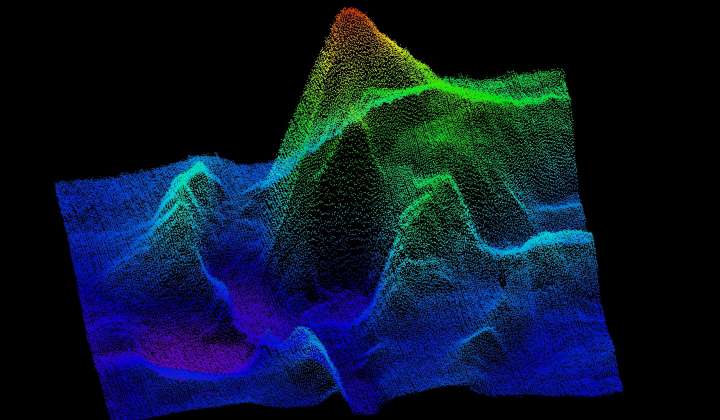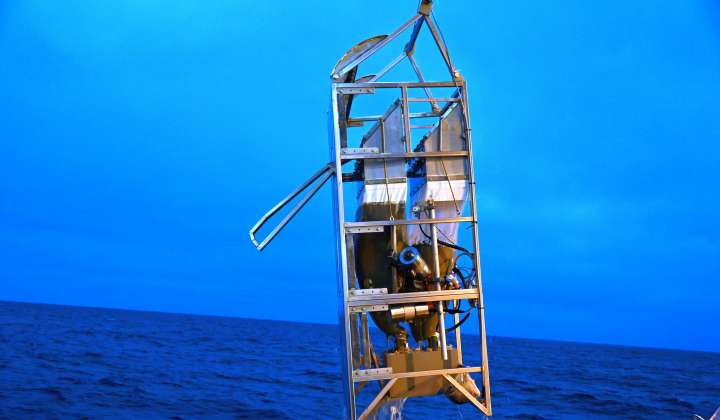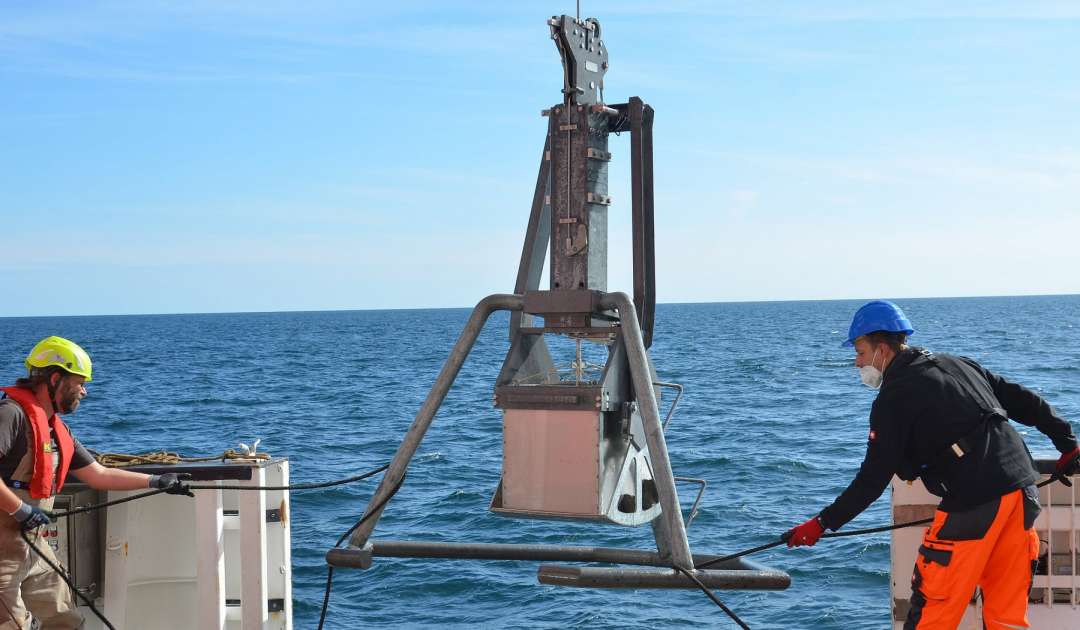
Gear construction: Fully mechanical working gear made of steel with a hexagonal frame. The column with the sample box, the shovel and the releasing mechanism are in the centre. The column is filled with lead, for pushing the sample box into the seafloor.
Dimensions: A hexagonal frame of 2,5 m width, a sample box of 50 x 50 cm and a total height of 3 m.
Weight: ~ 1 t
Deployment: The boxcorer is lowered by the winch down to the seafloor. As soon as the frame makes contact with the seabed, the lead-filled column slides through the frame and pushes the box into the sediment. During this process, the safety mechanism of the shovel is released. When the winch pulls at the rope, the shovel closes the box, and the gear is lifted out of the sediment. Now, the sample is taken and the boxcorer comes back to the ship.
Maximum Depth: Full Ocean Depth
Follow-up work: When the boxcorer is back at the ship, the sample box is removed. After that is done, the water above the sediment must be removed without damaging the sediment surface. When the water is drained, the sample is divided into horizontal slices which are put in sieves to wash them for getting the sediment-populating animals out, slice after slice. The sieves have different mesh sizes to make the sorting of the samples after the expedition easier. These fractions can be used for biomass and community analyses as well. Back on land, the animals are sorted out of the sieved fractions. Some fractions are sorted on board already.
Samples / Results: Quantitative samples of infauna animals. The boxcorer can also be used by geologists for studying the sediment itself, but not on this expedition.
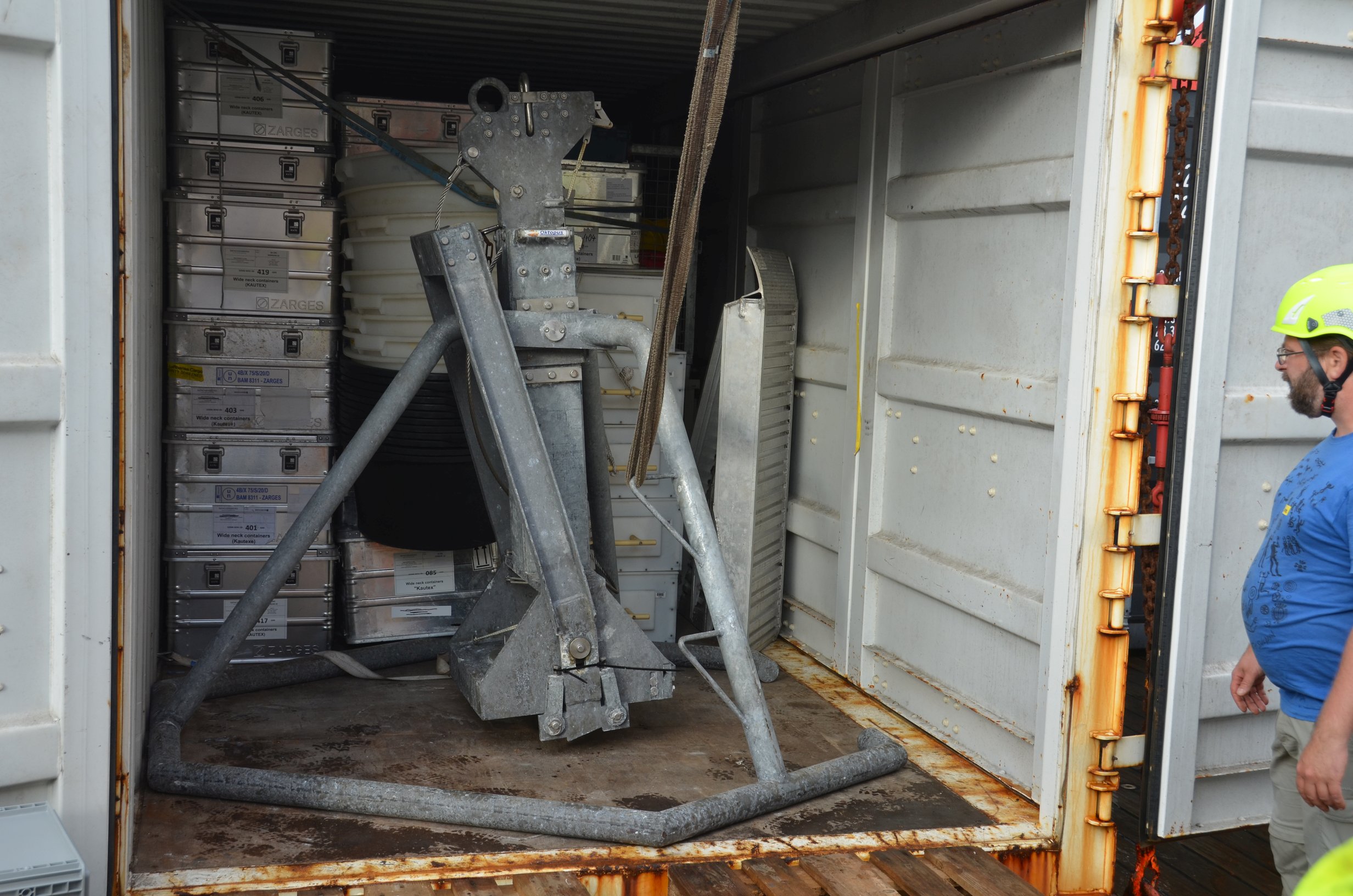

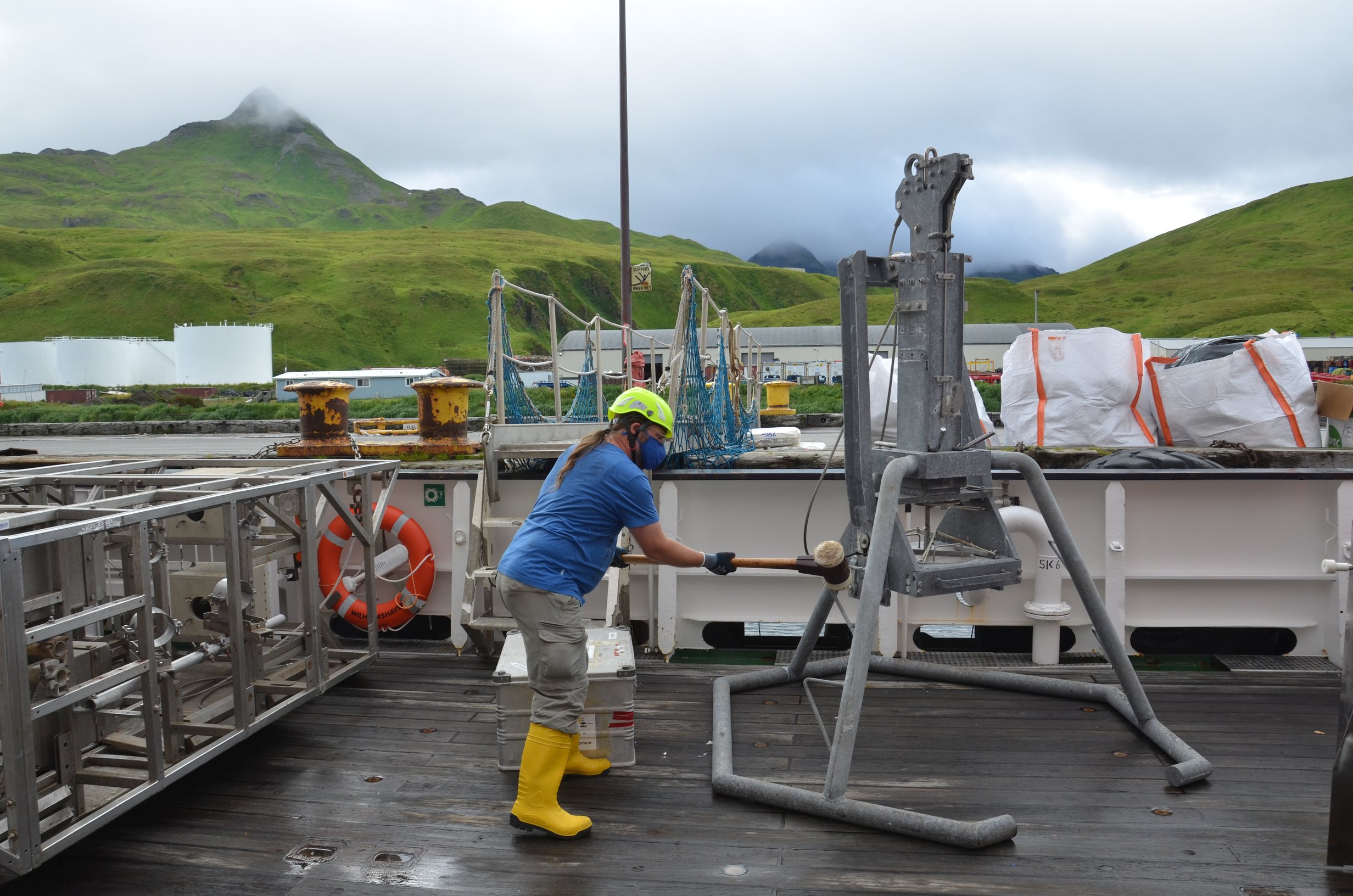
There is a locksmith on board the RV Sonne who will be happy to help.

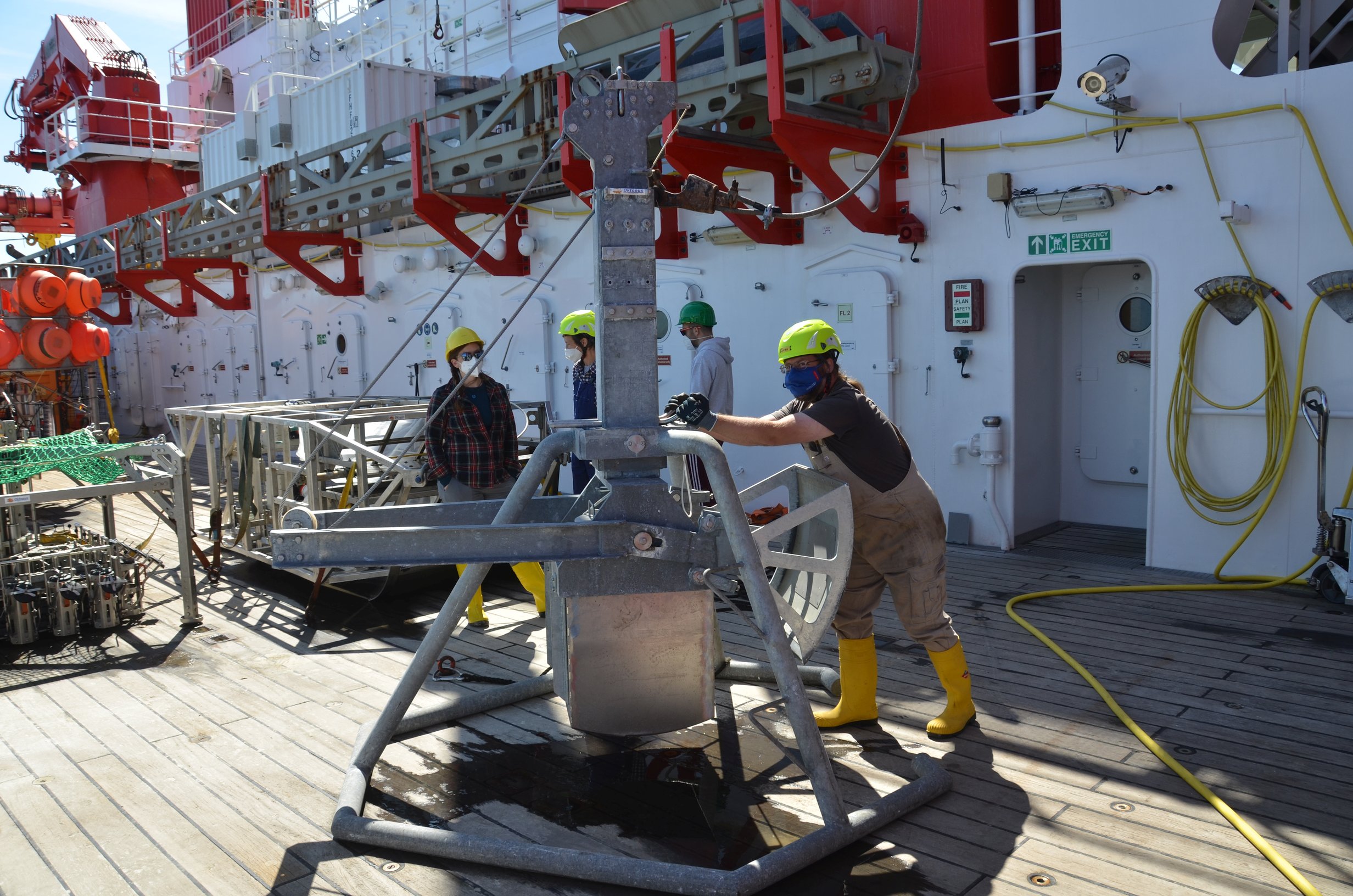
Unlock?
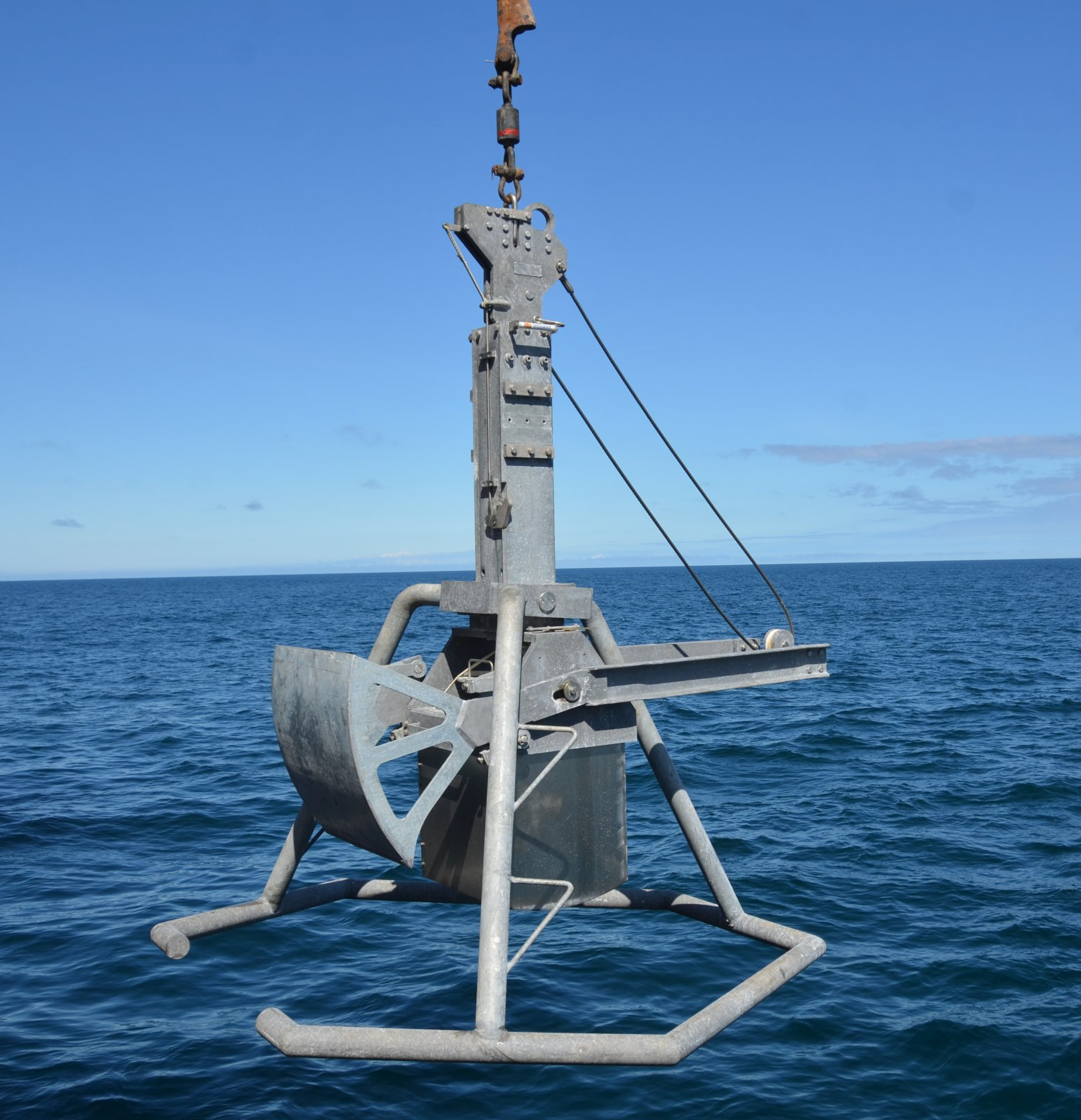
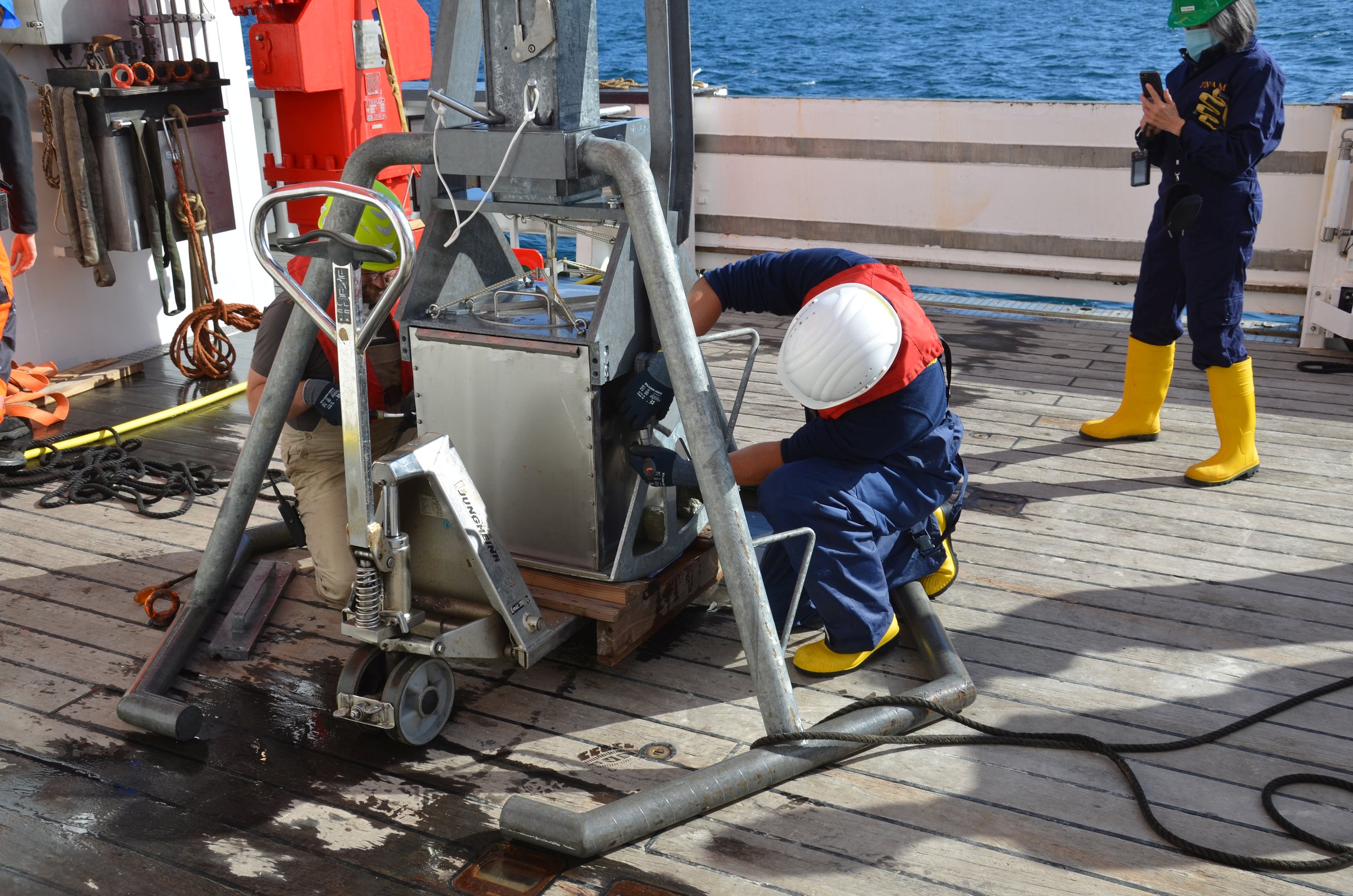
As soon as the full box is removed, a new box is inserted.
A skilled team has the unit ready for use again after 10 minutes.
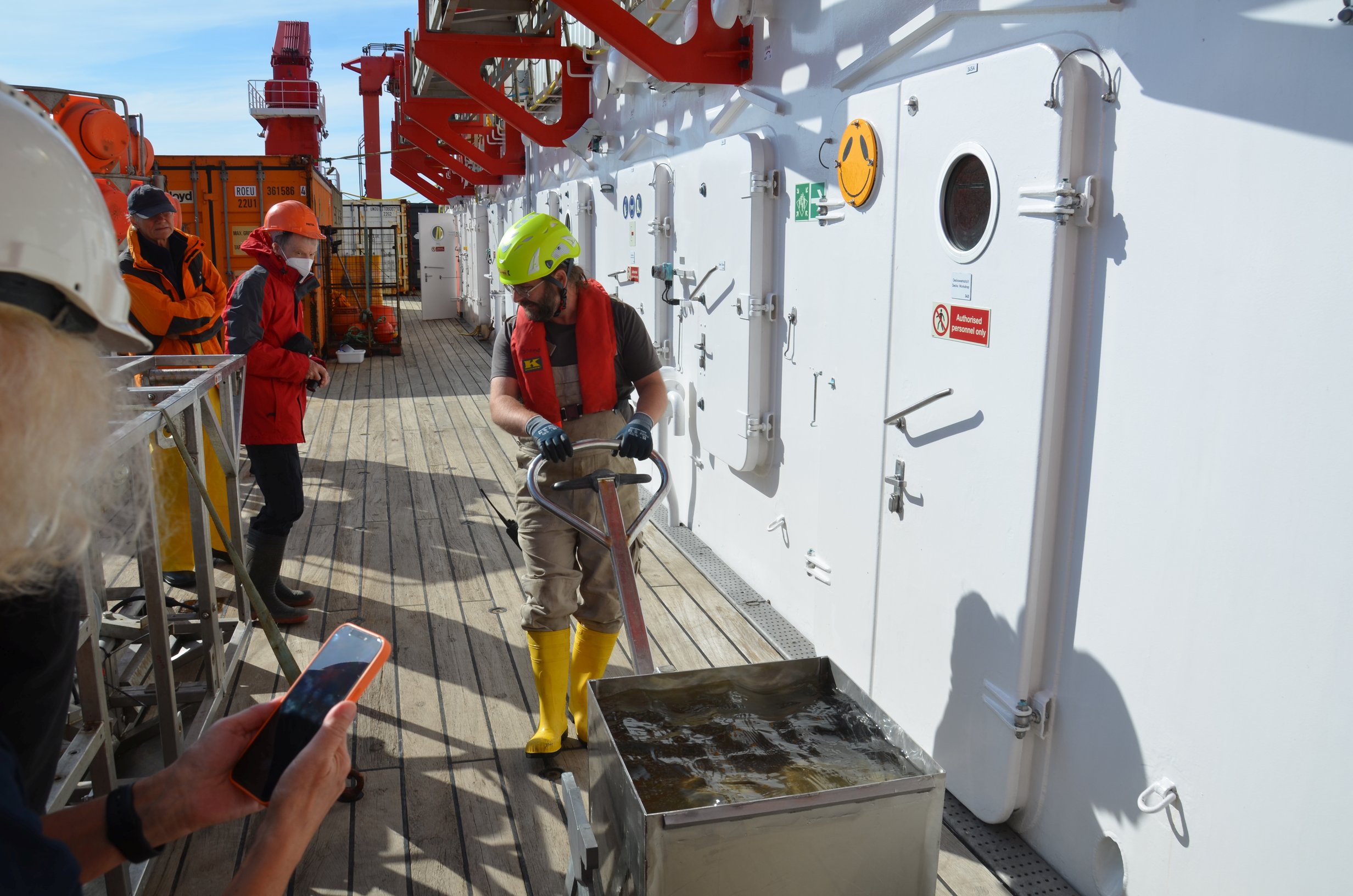
Sediment and water samples are taken.
The sediment is then sieved and examined for traces of life.






